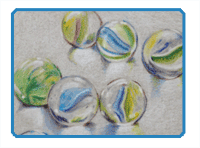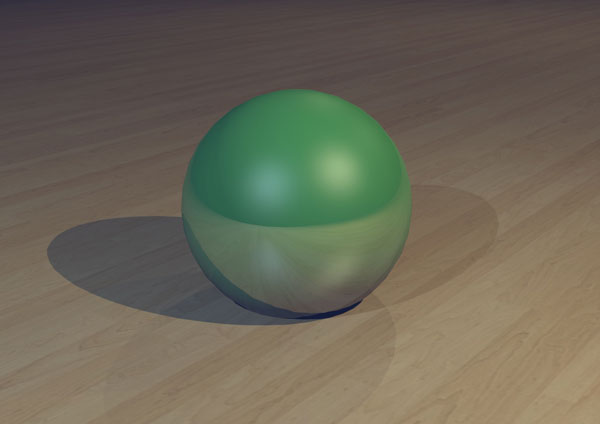
By Matt Fussell
Transparent objects, such as glass, are often considered to be challenging or difficult subjects to draw. The difficulty is multiplied when the object also has reflective characteristics. The challenge exists in how light behaves on and around these surfaces. Since drawing representationally is mostly about capturing the illusion of light, and reflective and transparent objects reflect light in irregular ways, therein lies the challenge.
So how do we overcome the challenge? The answer is simply through observation. Deep observation. We have to control our impulses to draw what we think we see and focus on what we are actually seeing.
Typically for reflective surfaces, this means areas of high contrast in value. Surfaces that are shiny often reflect and distort values and colors around them. This distortion produces quick transitions between values. Often, transitions aren’t present at all. Instead, dark values sit right next to light values. Subtle differences in values exist as well, but the area of transition is small. The problem most encountered is a failure to notice these areas of contrast. Instead, artists notice the local color of the object and assume that in order to draw the object, the local color must be addressed first. The object is then drawn without consideration for areas of high contrast and the result is a drawing that does not communicate a shiny surface.
Take a look at the reflective sphere. Do you see areas of contrast in value?

The issue is compounded for objects that are both reflective and transparent. Glass objects are both reflective and transparent. Light hits these objects and produces highlights, midtones, and shadows, but it also filters through the glass, producing unexpected patterns of values on surrounding surfaces. Often, light is intensified as it travels through glass to produce strong highlights on surfaces in areas where cast shadows are typically expected.
The key to creating the illusion of a transparent and reflective object again lies with intense observation. You must be willing to let go of what you think you see, or rather what you think you should be seeing, and focus on what values and shapes of values you are actually seeing. Be patient enough in your drawing to make marks that mimic what your eyes are recording. Focus on what abstract shapes and values you are seeing and concentrate on copying what you see on your drawing surface. If you do this, the illusion will follow.
We should always challenge ourselves in our drawing so that we experience improvement. I can compare to it lifting weights. If you always lift the same weight, you may be able to maintain your strength, but you’ll never get any stronger. However, if you push yourself to lift heavier weight, you will get stronger. It may be painful in the beginning, but in the long run, you will be stronger. With drawing, some of us choose to draw subjects that we are already good at drawing. We do this over and over again. (For me, it’s eyes) We also tend to shy away from subjects that we struggle with. When instead of drawing the things that we are good at over and over again, we should be focusing on the subjects that really give us grief. These are the subjects that will make us stronger artists in the long run.
A great subject to present the kind of challenge that we are looking for are marbles. Glass marbles are both reflective and transparent. But as a bonus, they also have areas of color embedded within them that are varying degrees of transparency. Not to mention, the shape of marbles is circles. What a perfect storm of challenge.
Pick up a bag of marbles and spread them out on a table. Draw them from observation, or take a photo and draw the photo from observation. Closely observe how light behaves on the surface, through the object, and on surrounding surfaces. Record what you actually see in your drawing.
For an added challenge, work in a colored medium like colored pencils. I suggest working on toned gray paper
if you go this route, so that the colors will instantly contrast with the background.
The featured video is excerpts of an hour long colored pencil tutorial on drawing marbles...
Here are some more art lessons that you may like...